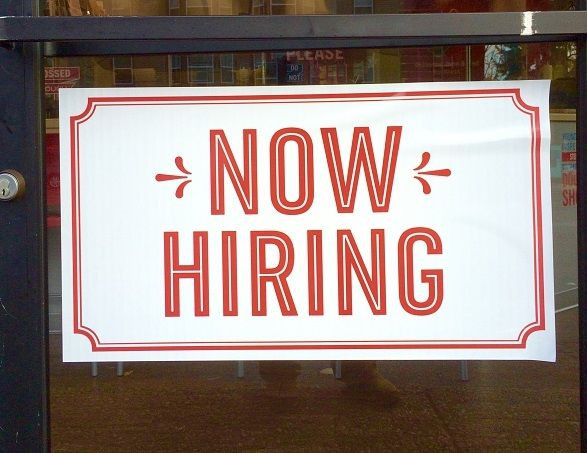Jobs Report April 2016: Millions Of Americans Are Rejoining The Labor Market, But Who Are They?

Over the past six months, the U.S. economy has achieved a rare feat: Participation in the labor force hasn’t declined once. Instead, the number of adults working or trying to find work has inched higher, month after month, a signal that the labor market has finally improved enough to bring back even the most marginalized segments of the workforce.
That’s a turnaround from a postrecession trend of potential workers steadily leaving the labor force, whether they were discouraged by their job prospects, still in school, disabled, or taking care of family at home.
Since September 2015, the labor force participation rate has increased 0.6 percent for working-age adults. But Americans aren’t returning in equal numbers. The cross-section of those returning reveals broader shifts in the U.S. economy, and a possible reversal of post-recession patterns that have concerned economists and helped tilt the political landscape. Although nearly all demographic groups have seen an uptick in labor force participation in the past year, recent gains have been particularly notable among white men and women, those without high school diplomas, and low-wage workers.
White men provide a striking example. Since the end of the recession, labor force participation declined more among white men than any other demographic group. Men as a whole were slower to recover from the recession than women, according to independent economist Diane Swonk.
“We see this reflected at the polls, particularly with white men,” Swonk said, noting that part of the trend could be explained by women graduating college at higher rates than men following the recession, setting them up for better employment opportunities.
Yet over the past six months, white men have experienced the strongest six-month growth in the labor force participation rate than they have since 1989. The participation rate grew four times faster for men of all races over that period than for women.
Whether the trend is a durable or merely a seasonal wobble remains to be seen. April employment figures, to be released by the Bureau of Labor Statistics on Friday morning, will provide additional clarity.
Economists watch the participation rate closely to help determine the state of the labor market. Unlike the standard unemployment rate, which leaves out those who aren’t even attempting to work, the participation rate captures the broadest measure of U.S. labor: the number of Americans working or looking for work as a share of the adult population.
Recent trends in the participation rate have been positive, but they haven’t done much to repair broader declines that began at the start of the century and accelerated sharply after the financial crisis of 2008. “We’re digging ourselves out of that hole, but we’re still not there yet,” said Elise Gould, an economist at the left-leaning Economic Policy Institute.
Gould noted that although retiring baby boomers have helped to push the participation rate down, aging doesn’t explain everything. Workforce participation fell nearly as quickly for prime-age adults — aged 25 to 54 — as for the broader population.
But just as the fall in the participation rate was uneven, the return to the workforce has also come in fits and starts. Of those subgroups that have seen a lift in the past year, one of the most surprising is those with the lowest levels of education.
Those with less than a high school education have returned to the workforce significantly more quickly with those who graduated high school as well as those who have attended college. For those aged 25 years or older without a high school diploma, the participation rate rose 1.6 percent over the past six months, compared to an average of 0.2 percent for all those with more education.
“In general, workers with historically fewer labor market advantages have experienced disproportionate gains in the past year,” said Claire McKenna, senior policy analyst at the National Employment Law Project.
But that doesn’t mean things are great for high school dropouts, whose unemployment rate stood at 7.4 percent in March, compared with 5 percent overall and 2.6 percent for those with college degrees. But it’s an improvement, and one that reflects where job growth remains robust.
“They’re going to be more lower-wage workers,” Gould said. “They’re seeing more opportunities.”
Though low-wage occupations don’t account for nearly as much of the nation’s employment gains as they did earlier in the recovery, they’re still a major source of job growth. Over the past year, the largely low-wage leisure, food service and health sectors have accounted for roughly 40 percent of the jobs added to American payrolls.
Still, the recent rise in the participation rate — which reflects both those who have found jobs and those who have just decided to start looking — means that even with 14.4 million jobs created since 2010, many more Americans waiting on the sidelines may be itching to return.
Some of the reasons for that fall outside the workplace. Swonk, for instance, points to gas prices, which have fallen nearly 40 percent in the past two years. “In the height of the jobs boom, employers couldn’t get people to take certain jobs because the commute cost wiped out the advantage of the job,” Swonk said.
With gas prices depressed due to a rout in the oil market, commuting long distances for a job becomes more economical, particularly for lower-wage workers who have been returning in recent months.
Whether these trends continue will have wide ramifications for the labor force and monetary policy. The more slack in the labor market disappears, the more quickly wage gains are expected to return to healthy levels. The Federal Reserve, meanwhile, wants to see continued improvement in the workforce to justify higher interest rates.
The Bureau of Labor Statistics is scheduled to release April's jobs report Friday at 8:30 a.m. EDT.
© Copyright IBTimes 2024. All rights reserved.





















